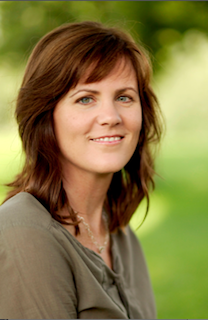My low back is killing me. I’m walking like I need a cane – and I shouldn’t be!
No matter what I do, the tension is still there – I should be over this already!
Does this sound familiar?
If yes, I can relate. After a week’s retreat in Crestone, Colorado, my low back started acting up again. It’s the part of my body that often reminds me to tune into my inner wisdom, and this time, by being with the physical sensations and listening to it, my back led me to make a call to my massage therapist, but…
She was on vacation.
Reflecting back on the retreat, the agenda was full of activities I’d always wanted to participate in, but the packed schedule felt a bit demanding. I found myself waking earlier than usual and with a sense of hurriedness. In addition, it took me awhile to unwind and fall asleep at the end of the day, which only made waking up more challenging.
Three days in and I had an unusual bout of constipation (Only in a Mind-body blog post is this not TMI). As someone that believes in the wisdom of the body, I sat on the pot wondering – Alright, what am I resisting? What needs to be let go of and released? (okay, maybe that is TMI).
At the time, it really didn’t sink in that my sympathetic nervous system – the one that perceives that I’m in physical danger – had been triggered (I was on vacation! How could I be stressed out?)
Furthermore, it didn’t even occur to me to say anything to the organizers who were therapists and body-workers – and who had stressed that it’s normal for our stuff to come up and to reach out if we needed them.
So, why did I dismiss my physical symptoms? Why didn’t I leave more time for myself in the morning to check in and see how I was feeling – even during the morning meditation? Why didn’t I say something? Why didn’t I reach out?
In one word – Resistance.
One of the cool things on the agenda included a visit to the Zen Monastery. After a 45-minute meditation with the monks, the teacher opened a discussion with us about Buddhism. My ears perked up when he referred to their schedule as a vehicle for shifting the monks out of their preferences and old habits. For example, he might change the morning meditation to 3:30am if the 4:00am schedule became too comfortable – routine. I sensed that living there invited a continuous process of going to the edge of resistance, feeling it, and then working with the thoughts that were creating it.
I decided to raise the question of how to balance a demanding schedule (even with activities I looked forward to and didn’t want to miss out on) with the body’s natural rhythm and flow. After all, if I don’t get enough sleep, there is a real physiological response. Do I really want my hormones to go haywire? I asked the monk, “With such a rigid schedule at the monastery, how can you tell whether it’s resistance to waking up early, or your body’s true need for taking care of itself? I can see the value of creating a schedule and other circumstances that prompt us out of our comfort zone, but how can you do this and yet balance the need to take care of your body and overall well-being?”
The teacher referred to one of the other monks who’d been at the monastery for four years. He was quick to reply (with a hint of New York accent), “It ain’t easy!” He continued to say that “There are trade-offs. It’s a choice.” He chooses to live in the zen monastery community with it’s rigid schedule (my choice of word), but he’s conscious of the trade-offs and the choices he’s making.
I still couldn’t let it go (pun intended). I wanted to hear the retreat organizer’s perspective as well. I asked, “With a retreat that is intentionally designed to help participants become aware of their resistance, how can you balance that with the need to respect your physical, emotional and spiritual well-being?”
She simply asked me a few questions and it got real. She pointed out that my inner child was saying, “I don’t want to be on anyone else’s schedule”, “I’ve got to be good/perfect, do what’s expected…meet someone else’s expectations, people-please…and I don’t like it and I don’t want to do that anymore” (picture inner child with hand on hip). This was the resistance that was making it difficult for me to wake up and believe that now, as an adult, that I have a choice.
The demanding schedule was actually a gift – prompting me to become aware of the choices available to me so that I could indeed consciously choose.
But I didn’t.
I didn’t take the time to tune into my body to ask what I really needed and wanted. Why bother? Logically, I knew I didn’t want to miss out on anything and I didn’t want to create any potential conflict either (I wanted to be liked, good, etc). In all likelihood, I may have chosen to do everything exactly the same, but I realize now, that my experience might have differed had I made a conscious choice.
So at this point, I hadn’t really experienced the tightness in my low back, but that all changed on the drive home. The sensations became even more pronounced after I was safe and sound at home – with the familiar (Isn’t it interesting that the physical symptoms appeared when I perceived that I was in a “safe” environment?)
I struggled for several days, barely able to put dishes in the dishwasher. Fortunately, I had my annual appointment with a woman who specializes in Mayan abdominal massage (nod to my inner wisdom’s initial guidance). As she massaged my back, she noticed that my left hip and sacrum were out of place which was actually creating the tension I felt on the right side of my low back.
I then turned over and she told me the energy in my abdomen felt sticky. I felt it too and remembered a comment another body-worker made upon observing my posture. She suggested that there was a correlation between the tension in my back and my psoas muscle.
According to David Bercelli Ph.D, author of The Revolutionary Trauma Release Process and Trauma Release Exercises, the psoas muscles are the muscles that contract when danger is perceived to be present. They are located deep in the body connecting the back with the pelvis and the legs, and they remain contracted until the danger is over, but they’ll hold the protective tension until it can be dissolved.
Lying on the massage table, an image appeared in my mind’s eye – It was a steel rod along the right side of my psoas muscles. She continued to massage that area and asked me what it needed. Immediately, an image of a blow torch appeared and I saw the flames melting the steel rod and turning it into liquid gold.
How true. I’d learned so much through this journey, with each lesson worth it’s weight in gold.
I learned that while I was indeed back in a “safe” environment for me to process my experience and emotional energy from the trip, I’d also returned back to an old agenda of “getting down to business”; “I better get the business going, but then not too much or I won’t be able to manage my time effectively and I’ll get overwhelmed and collapse under the pressure; I won’t have choices, and even if I do, I won’t be able to say no; I won’t have time, or the presence of mind, to tune into what I need; I won’t be able to consciously choose…and I won’t like that! (Oh to be aware!)
What does making a conscious choice look like?
This time…in addition to becoming aware of these thoughts, I gave myself a moment to consciously check-in to the emotional energy in my back for what I needed and wanted.
Here’s what I learned…
What do I need to care for myself?
I imagined biting into a luscious strawberry and felt the need to experience more pleasure and joy. Like the deep red of the strawberry, I needed to nourish myself with vibrant experiences that make me feel alive.
That means going to the edge of resistance as I try on a new experience, and using it as a prompt to turn inward so that I can ask what I need and want in the moment, and perhaps what would be fun too!
When I look at a schedule, or another circumstance that will likely prompt my resistance, I can allocate some additional time for this type of inner wisdom check-in to occur. That way, I can have the space for myself to consciously choose whether to go to the edge of my resistance, or past it (breaking the pattern of my comfort zone and old habit), or decide that what I truly need is to move more slowly, or rest.
What do I want?
I imagined a solid gold bar and the desire to feel rich and abundant as well as precious, important and valued.
What I wanted was to turn the steel rod into a new thought – I am valuable and rich. Instead of fearing that I’ll upset someone (and potentially feeling the emotional energy related to that), I can voice what I’m experiencing, what I need, and what I want because what I have to say is important.
These are my new mantras and this is the process of turning resistance into gold.


